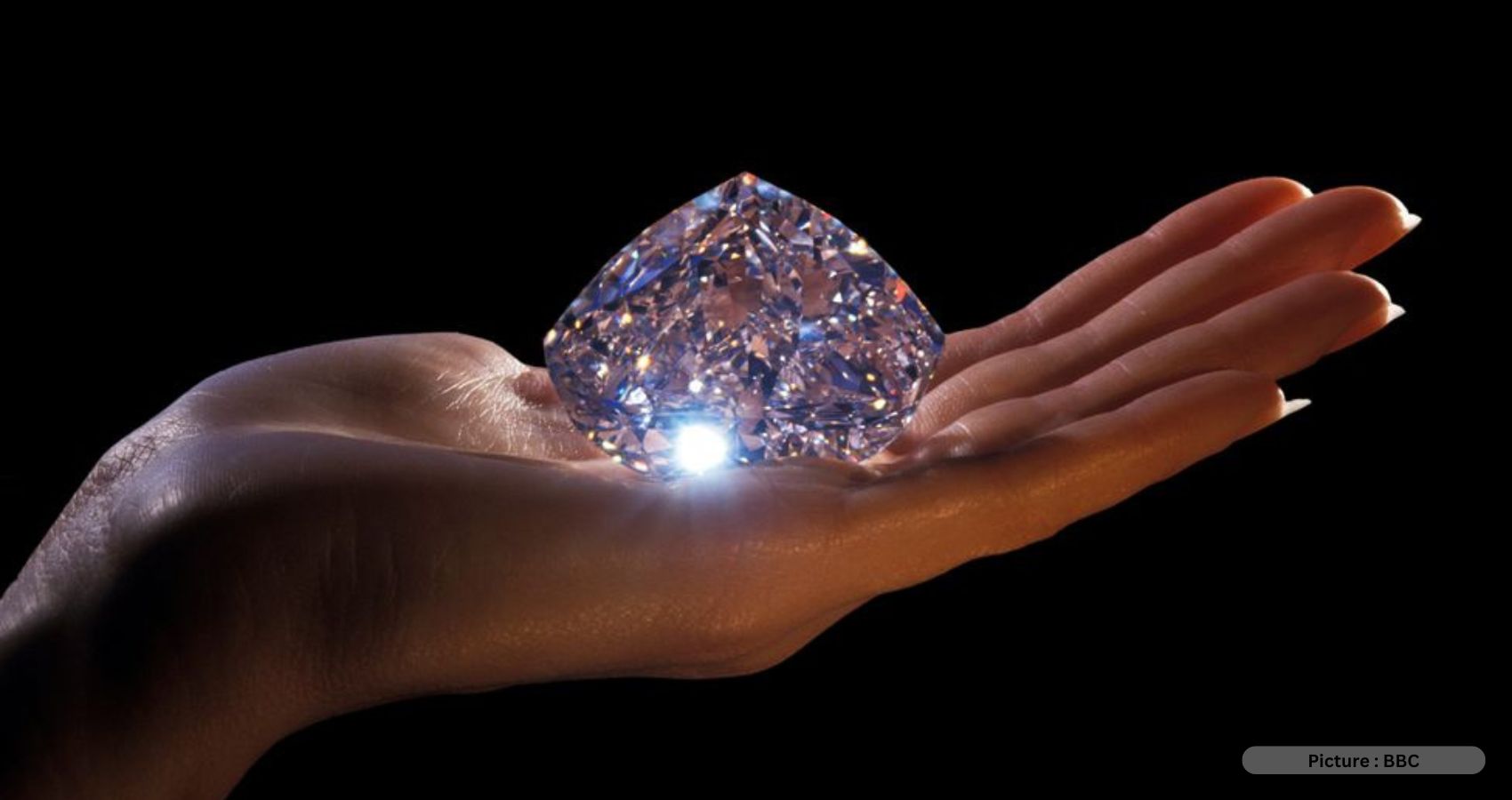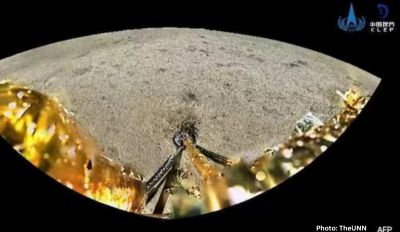In 1905, a package arrived at S Neumann & Co, a mining sales agency in London. The plain cardboard box was addressed to the agency and weighed just over a pound, but it carried cargo that was far from ordinary. Three months earlier, the surface manager of the Premier Mine in South Africa had been doing a routine inspection when he saw a reflected light in the rough wall above him. He thought it was a piece of glass that a colleague had placed there as a joke. Just in case, he took out his pocketknife to dig it out. Unfortunately, the knife snapped, and it took a lot of effort to remove the rock. Once it was removed, it turned out to be a monster of a diamond weighing 3,106.75 carats, almost the size of a fist. The Cullinan diamond, as it came to be known, was not just enormous but also unusually transparent.
After being polished and cleaved into several more manageable stones, the largest crystal it yielded would shine like the cool glow of a star in a distant galaxy, now known as the Great Star of Africa. The Cullinan diamond is the largest diamond ever found, known across the globe for its size and transparency. These characteristics were no accident. They were Clippir diamonds, a special category of the largest and clearest diamonds ever found, and they hold enigmatic stories of the Earth’s interior.
Today, the Cullinan diamonds are part of the British Crown Jewels, normally kept in the Tower of London and brought out for state events. The Cullinan I is in the Sovereign’s Sceptre, and the Imperial State Crown is embedded with its next-largest sibling, the Cullinan II. The less famous Cullinan III, IV, and V also featured in King Charles III’s coronation, placed on Camilla’s head during the ceremony on May 6th.
Before the rough diamond could take its place in history, however, it needed to be sold, which led to a significant concern: how do you transport such a valuable stone 7,926 miles (12,755km) without it being stolen? The precious rock was ultimately sent from Johannesburg by ordinary registered post for a mere three shillings, while a replica, placed conspicuously within the captain’s safe, was transported by steamboat to London, heavily guarded by police.
Clippir diamonds are fragments of the deep Earth, intriguing geological anomalies found disguised as mere jewellery. They are capsules from Earth’s mysterious realm of unfathomable pressures, swirling green rock, and elusive minerals far below the surface. Scientists worldwide have been studying them for decades to unlock the region’s secrets, and it’s the diamonds that we value most that are transforming our understanding of Earth’s interior.
The largest diamonds, like the Cullinan, have the most intriguing stories to tell. These special diamonds are stowaways from a world that we are rarely aware of, reaching the surface and providing clues about our planet’s otherwise inaccessible depths. These diamonds are unlike any other object that has made it out of the Earth’s interior without being changed to an unrecognizable extent.
The Cullinan diamond and other Clippir diamonds are captivating geological specimens. Their value is not just in their aesthetic appeal, but also in their tales about an enigmatic realm beyond our immediate experience. Clippir diamonds are transforming our understanding of Earth’s deep interior, and it’s a story that never fails to captivate the imagination of many.
Challenges in Diamond Research
Diamonds are some of the rarest and most valuable minerals on earth. They hold scientific value as well as commercial value, and researchers are always seeking new insights into their formation and characteristics. However, obtaining large, high-value diamonds for scientific research is no easy task. Even researchers who work regularly with diamonds find it difficult to acquire large specimens.
Maya Kopylova, a professor of mineral exploration at the University of British Columbia, acknowledges the challenges of obtaining diamond samples for research purposes. “Researchers have to have a good relationship with companies and they will never give you valuable samples,” she says. “So, they will never give us diamonds that are 6mm (0.2 inches) in size or larger.”
The obstacles to obtaining diamond samples are significant. Access to high-security facilities where diamonds are sorted is required, and identifying the specimens to be studied takes time and effort. Then comes the paperwork – all diamonds must travel with a Kimberley Process certificate, which proves their provenance and helps to prevent conflict or “blood” diamonds from entering the market.
Despite these challenges, Evan Smith, a research scientist at the Gemological Institute of America (GIA), has access to one of the largest collections of diamonds on the planet – millions of gems that have been sent there to be valued, so that they can be insured or sold. “Every few days, you might get to borrow a diamond for maybe a few hours, maybe a day or two and study it,” says Smith.
Smith and an international team of scientists requisitioned 53 of the largest, clearest, and most expensive diamonds available, including some from the same mine as the Cullinan diamond, one of the largest diamonds ever found. What they found was revolutionary. Nearly three-quarters of the diamonds contained tiny pockets, or “inclusions” of metal that had avoided rusting, while the remaining 15 contained a kind of garnet which only forms within the Earth’s mantle, the layer above its molten core.
Together, these inclusions provide a wealth of chemical clues that reveal how the diamonds were formed and under what conditions. These clues indicate that the diamonds could only have formed no fewer than 360km (224 miles) and no more than 750km (466 miles) below the earth’s surface. In this Goldilocks zone, it’s deep enough to explain the metal inclusions that hadn’t been exposed to oxygen, which is abundant higher up, and it’s not so deep that the garnet rocks would have broken down under the immense pressures of the lower mantle. Ordinary diamonds originate below the crust, just 150-200km (93-124 miles) down.
Smith’s latest research project involved examining a diamond worth almost as much as a small country – about the size of a walnut, with 124 carats of wonderous brilliance. Smith carefully stretched some rubber gloves over his fingers, peered into the microscope’s lenses, and examined the diamond for inclusions. Working with high-value diamonds is always a tricky business, but at GIA, Smith has access to the equipment, facilities, and expertise necessary to conduct cutting-edge research.
Together with Wuyi Wang, who is vice president of Research & Development at GIA, Smith analysed the 124-carat diamond and found that it formed at the deeper end of the possible range – at least 660km (410 miles) below the earth’s surface. Their findings have important implications for our understanding of the processes that shape our planet, as well as for the mining industry and the global economy.
From the depths
According to Evan Smith, “From a geological perspective, diamonds [in general] are really strange minerals.” Interestingly, humans invest millions of dollars every year in the search for diamonds, despite the destruction and chaos that often comes with the mining of these precious stones. The unusual properties of diamonds make them intriguing and valuable rocks. In fact, diamonds are unique in comparison to other rocks on Earth because they form at much deeper levels – up to 600 km below the surface. Even magma that reaches the surface comes from around 400 km down, but that is melted rock. Thus, diamonds that emerge on the surface are a significant composition of the Earth’s deeper layers.
Every diamond besides lab-grown ones that has ever been sold or worn is at least 990 million years old and crystallized during a time when there were only primitive algae on the planet, just starting to grow on land. Some diamonds are more ancient, originating from at least 3.2 billion years ago, when the planet was mostly water with no visible land or continents. After forming at such substantial depths, it takes an unusual series of events to bring diamonds to the Earth’s surface.
First, magma containing diamonds, developed over hundreds of millions of years of movement in the mantle, reaches closer to the surface as part of massive “plumes”. Next, it has to be in the right spot at the right time to be blasted to the surface. Then the diamond has to be in the right place at the right time, to be blasted up in magma. Finally, the diamond has to be located within kimberlite rock, where it is preserved for millions of years before being discovered.
In the last few decades, scientists began to notice that while most diamonds have a considerable amount of nitrogen, some larger diamonds contain much less. Typically, these are the Type II diamonds, which were exceptionally rare until discovered in large, high-quality diamonds like the Cullinan. “It’s not just that they’re big that sets them apart,” says Smith. “When you look at these big, high-quality [type II] diamonds, like the Cullinan, there turned out to be something strange about them that makes them more likely to fall into this category that should otherwise be something very rare. This was kinda a long-standing mystery.”
After studying some of these super-deep diamonds found at the Cullinan and Letseng mines in South Africa, researchers discovered that some diamonds had formed deeper in the Earth’s mantle than others. However, Smith’s team found a mineral in their 124-carat specimen that was discovered only six years ago – bridgmanite, the most abundant mineral on Earth that can only exist at the extreme pressures found in the lower mantle, the layer above the Earth’s molten core. Smith concludes that the sparkle of super-deep diamonds is due to the unusual formation process at extreme depths, which causes them to contain a unique mineral.
Despite these scientific insights, mining for diamonds remains a challenging and controversial activity. The pursuit of scientific knowledge must continue, but “the budget of any research project” is comparatively small in comparison to that of the diamond industry. Thus, although mining for diamonds and the geological properties of these stones coincide, ethical considerations need to be taken into account while harvesting these rocks.
Ancient carbon
The formation of the world’s largest and most valuable diamonds is a result of their unusual qualities, according to renowned diamond expert, Evan Smith. Regular diamonds are believed to start as a fluid, most likely ancient seawater trapped deep underground along with sinking oceanic plates. However, super-deep diamonds such as the Cullinan are formed from carbon dissolved within liquid metal, far down in the planet’s interior.
These vanished, subducting plates that are usually heavier, oceanic ones, eventually drift down into the lower mantle, but it has never been confirmed. Smith explains that super-deep diamonds provide important clues to confirm this phenomenon, as they may be composed of what these subducting plates are made of.
In addition to confirming what happens to oceanic plates that end up in our planet’s interior, super-deep diamonds can also reveal the kinds of things that may exist in the lower mantle. Carbon is a key component of these diamonds, but scientists have also discovered a rare super-deep diamond from Juína, Brazil, which contains a pocket of hydrous ringwoodite, a high-pressure form of olivine. Interestingly, this type of ringwoodite contains around 2.5% water and suggests that water is stored lower down in the mantle, where many super-deep diamonds form. Scientists have believed for years that all water on the Earth’s surface ultimately comes from the mantle; however, where it is stored has been up for debate considering olivine does not store water well.
Smith emphasizes that super-deep diamonds aren’t just extraordinarily valuable in monetary terms, but they also provide valuable scientific data about the Earth’s inner workings. “The more scientists learn about them, the clearer it becomes that super-deep diamonds aren’t just extraordinary valuable in monetary terms – without them, many of the processes inside the Earth would have remained hidden from view,” says Smith.
Furthermore, the rough form of diamonds can offer valuable insights into their formation. When diamonds emerge from the Earth, they’re lumpy and coarse, with none of the sparkle they acquire after they’ve been cut and polished. However, these lumps reveal a history of their adventures underground and may provide scientists with a chance to analyze diamonds in their natural state.
Super-deep diamonds offer valuable insights into the inner workings of the Earth. From confirming the process of subduction to understanding the storage of water in the mantle, these unusual diamonds have the potential to unlock a wealth of scientific data. As Evan Smith puts it, “There’s kind of a weird duality, where super-deep diamonds are both extraordinarily scientifically valuable, but also very commercially valuable.”
“The diamond can be chemically etched away by magma, and you end up with these really unusual shapes and intricate features… the natural surfaces that have been sculpted by all these different forces over millions of years. That is unique, and I see a lot of beauty in that.”











